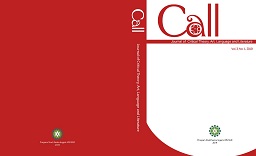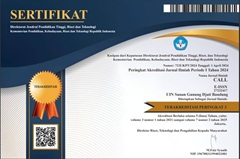MASCULINITY OF HEROINE IN XENA: WARRIOR PRINCESS (1995) AND THE HUNGER GAMES (2012)
DOI:
https://doi.org/10.15575/call.v2i1.8762Abstract
Abstract: This study is aims at revealing the female masculinity or masculine character reflected in the character heroine of Katniss Everdeen and Xena. The characters created are also both heroes mostly born in the adventure genre. Heroine is the female protagonist character. The hero overcomes these opponents because he is strong, brave, resourceful, rational, and determined to succeed, he may receive assistance from wise and benefit being who recognize him for what he is. The words masculine can refer to the property of being biologically male. Inferiority to high culture are derived from, and refer back to, the sexist constructions of femininity and masculinity in the wider society. Researcher look for data relating to the question of the problem, how are the masculinity aspect of heroine described in Xena: Warrior Princess and The Hunger Games Movie. The researcher used comparative method to find differences and similarities of the both character to be used as objects of research with the topic woman characters. From the analysis, it was found that Katniss and Xena had masculinity of heroine. This also shows a striking difference in both character.
Keywords:Â Â heroine, masculinity, comparative, film, sexist.
Downloads
Published
Issue
Section
Citation Check
License
Authors who publish in CALL agree to the following terms:
- Authors retain copyright and grant the journal right of first publication with the work simultaneously licensed under Attribution-ShareAlike 4.0 International (CC BY-SA 4.0) License that allows others to share the work with an acknowledgment of the work's authorship and initial publication in this journal.
- Authors are able to enter into separate, additional contractual arrangements for the non-exclusive distribution of the journal's published version of the work (e.g., post it to an institutional repository or publish it in a book), with an acknowledgment of its initial publication in this journal.
- Authors are permitted and encouraged to post their work online (e.g., in institutional repositories or on their website) prior to and during the submission process, as it can lead to productive exchanges, as well as earlier and greater citation of published work (See The Effect of Open Access).




